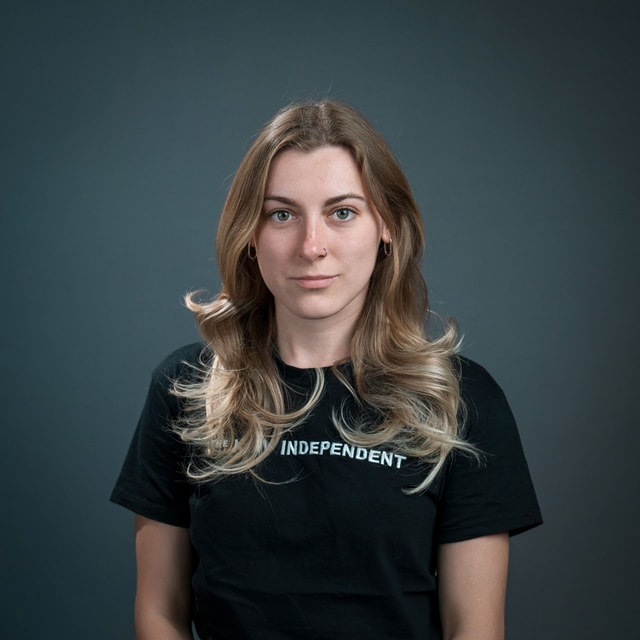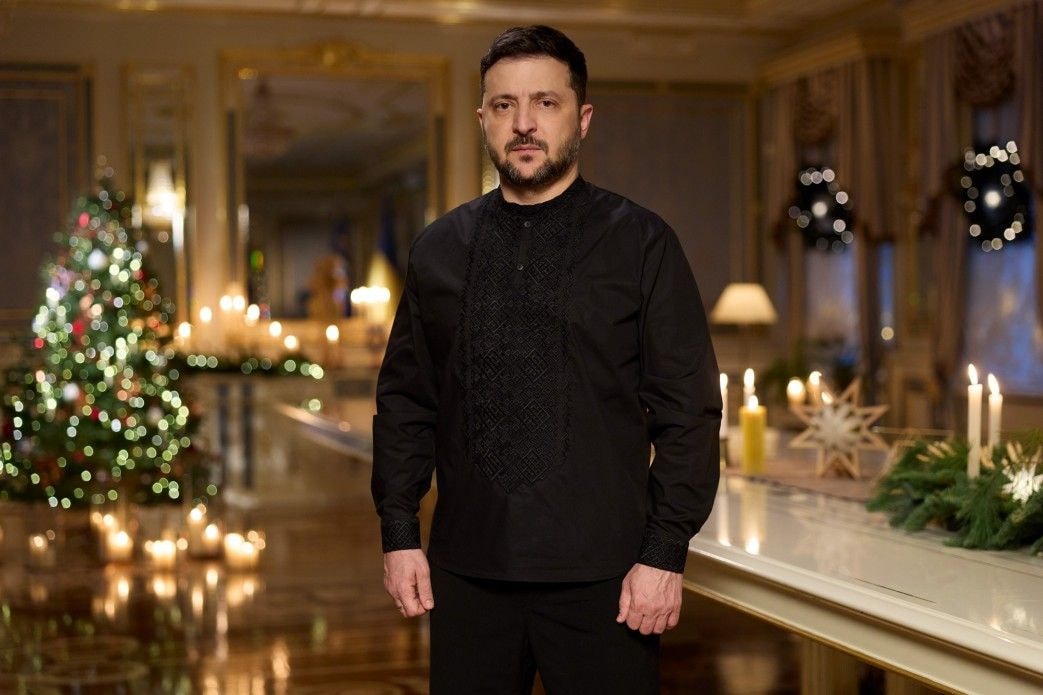
Pokrovsk is the city of my childhood. Now I watch it die
I used to do my back-to-school shopping in this town. Twenty-five years later, I film war reports here.
“White Angels” unit of the National Police of Ukraine walk through a destroyed neighborhood during the evacuation of civilians in Pokrovsk, Donetsk Oblast, Ukraine on June 19, 2025. (Kostiantyn Liberov / Libkos / Getty Images)

Olena Zashko
A few weeks ago, my colleague Francis Farrell and I were in Pokrovsk.
As a war reporter, I’m used to seeing war-torn towns. Last year, we saw glide bombs raining down on Vovchansk, filmed interviews with soldiers in the ruins of Lyman, and joined a volunteer evacuation mission taking civilians out of Selydove, which was on the verge of occupation.
But this time was different: Pokrovsk isn't just another city for me.
My native city is just a half-hour drive away from Pokrovsk, and it’s a much smaller one. Pokrovsk, with its pre-war population of more than 80,000 people, is the closest real city to where I grew up.
Every year, before school started, my parents would bring me to Pokrovsk for my back-to-school shopping — to buy stationery, school clothes, and shoes.
Back then, the city was still called Krasnoarmiysk, after the Red Army. Years later, the city’s name was changed to Pokrovsk — part of a national effort to get rid of all Communist names.
I didn't know the city well — in fact, I barely knew it at all. Just the road from the train station to the central market, where every August we bought the supplies for school.

It was at that market that I got my first school uniform before starting first grade. We took an exciting trip to Pokrovsk by car with my future classmate and our parents. We passed by a terrikon — one of those towering coal waste hills common in the Donbas region. It was the first time I saw it. I asked my mom, “Wow, are those mountains?”
Because almost all families from my town went to Pokrovsk to buy something “fashionable” for their kids, we all ended up with nearly the same outfits. In the photo from the first day of school, a lot of girls from my class wear similar white lace collars, blue jackets, and skirts.
Here, at this market in Pokrovsk, we bought me a silly red-and-black fur coat. Here, I tried a hot dog for the first time, served with corn and Korean-style carrot salad, popular in Ukraine. Here, we got me a fantastically beautiful pink homework planner with Barbie on the cover, for my third grade.
Here, we picked out my graduation dress. And guess what happened? My classmate and I bought the same dress, but in different colors: I got a white-and-rose one, and my classmate a white-and-black one. There were a lot of girls looking for beautiful dresses, but there was only one market in Pokrovsk.
There have been some non-shopping trips. Once, my grandmother and I came to Pokrovsk to visit relatives who lived in Dinas, a neighborhood in Pokrovsk. Another time, I came to visit my former classmates — they had entered a local vocational school. That was pretty much all I knew about Pokrovsk: the central market, Dinas, the vocational school.
In 2014, Russia invaded Ukraine for the first time, and occupied Donetsk, the capital of Donetsk Oblast, where Pokrovsk is located. At the time, I studied in Donetsk, and I saw the whole thing play out in front of my eyes — the invasion masked as a pro-Russian separatist rebellion.
The month after that, my family and I once again came to Pokrovsk to shop.
Although it still bore its Communist name, there were a lot of Ukrainian flags and banners. I took some photos of it — I felt so proud of that city. All these years, it was a small, ordinary city. Now the war was 45 kilometers away from it — less than an hour’s drive. And Pokrovsk was rising to its newfound significance.
I felt so proud of that city.
As we lost Donetsk, the big regional capital, I saw that the small Pokrovsk has its own identity and temperament, and wants to be a Ukrainian city, not Russian. I remember that I took those photos and posted them on Facebook as a symbol of resistance.
I had never thought that 10 years after that, I would be filming what seemed like the start of the apocalypse in Pokrovsk.
And then Russia invaded Ukraine for the second time — in February 2022. By then, I hadn't lived in the area for a long time. When I returned to Pokrovsk in February 2024 for the first time in a decade, I came in a new capacity — as a war videographer, documenting the war in my country.
At that time, Pokrovsk was still relatively deep in the rear. It was a convenient place to stay on reporting trips — a base where we could rest in-between field trips to the front line. Another such city was Kramatorsk.

The Pokrovsk I returned to in 2024 was nothing like the city I used to come to for back-to-school shopping. Gone were the market clamor and the excitement. The new Pokrovsk was the city of war, filled with soldiers, reporters, and locals — more often unwelcoming than happy to see you.
I remember finding it ugly and dirty, with brazen landlords charging high rent for apartments in terrible condition. Still, there was a lot of life. The soldiers and journalists crowded a popular local cafe, Bulvar. It felt like a place from another universe: bright, modern, and stylish, it was an alien presence in this small post-Soviet city.
But a few months after that trip, in August 2024, Russian forces came closer to the city. In September, we returned to Pokrovsk. The change was astonishing. It looked like it was on the brink of the apocalypse — the forced evacuation started, and Russian bombs started to fall on the city. Pokrovsk became emptier, and most shops were closed. So was Bulvar.
We met people who decided to stay in Pokrovsk. A nail technician with absolutely stunning nails. I remember the sound of a glide bomb whooshing through the air while she was doing nails for a client. It was such a strange moment.
Or a woman who sold fruits at a street market — the same market where I would buy my school clothes. She was scared, but she said she hoped that everything would be fine.


We met a man who survived after one of the first glide bomb attacks on the city, which hit his house. We met a miner who had worked his whole life in a nearby mine.
The last time we came back to Pokrovsk was in June 2025. The city was mostly destroyed. People who stayed lived in basements or destroyed apartments, or were buried right in the courtyards of their houses.
Is it normal that people in Ukraine think about how not to die during the night?
At one point, I was lying in a cold basement, listening to the explosions outside, and watching soldiers from a drone unit at work. And I thought: Is it normal for me to be here?
Less than a year ago, during our last trip to Pokrovsk, we rented an apartment in a neighboring building to where I was now, and our biggest problem was that the place was too hot. And now I was lying in the basement and the challenge for the night was not to die from the Russian shelling or glide bombs.


Is it normal that people in Ukraine think about how not to die during the night? It’s not normal. But here we are. The apartments above us are all abandoned. Where are all those people? What happened to everyone we met here last year?
There were still people in Pokrovsk. One woman didn’t want me to film her. She started screaming at us.
“Why are you filming me and the city?” she screamed.
“We want to show the reality to the world,” I replied, my camera in my hands.
“The world knows about the situation in Pokrovsk, doesn’t it?” she snapped angrily. It was the anger of despair.
“The world knows about the situation in Pokrovsk, doesn’t it?”
After our last visit, the situation in Pokrovsk got worse. Soldiers say that a Russian sabotage and reconnaissance group was spotted in the part of Pokrovsk that we visited.
This city is one of the most scarred places that I have seen during this war. But perhaps, the reason for that is that I have known this city for 19 years. And now I see it dying.

It‘s not just sad — “sad” doesn’t really capture it. It’s personal.
Our exit from Pokrovsk was memorable — as we were driving out, we spotted a Russian strike drone flying straight at our car. For a few moments, I thought it would hit us, but it went away.
I remember thinking: This is our last trip to Pokrovsk. I won’t see this city again in the near future, if ever.
The next thought is one I can’t get away from: Is my hometown next?










